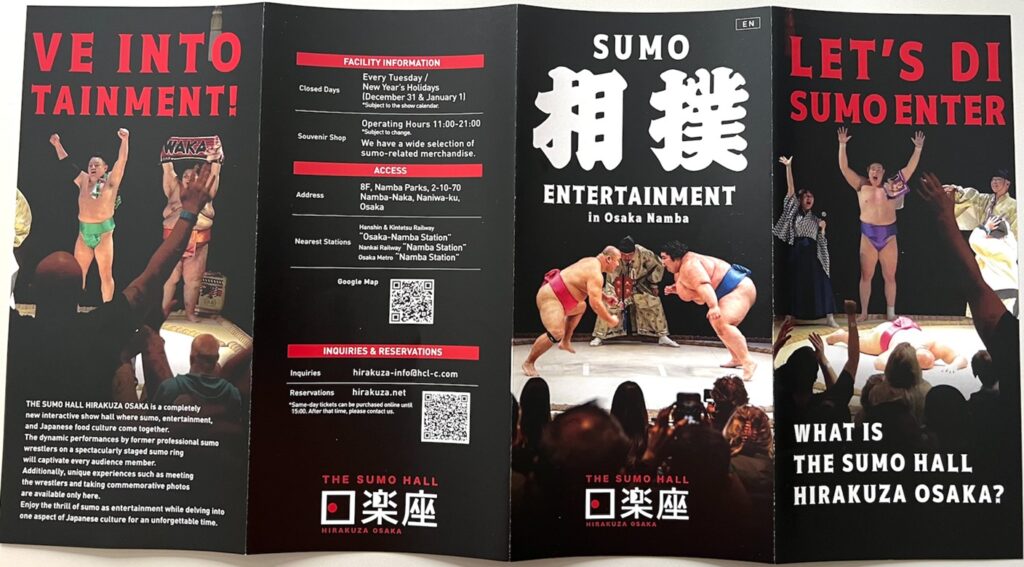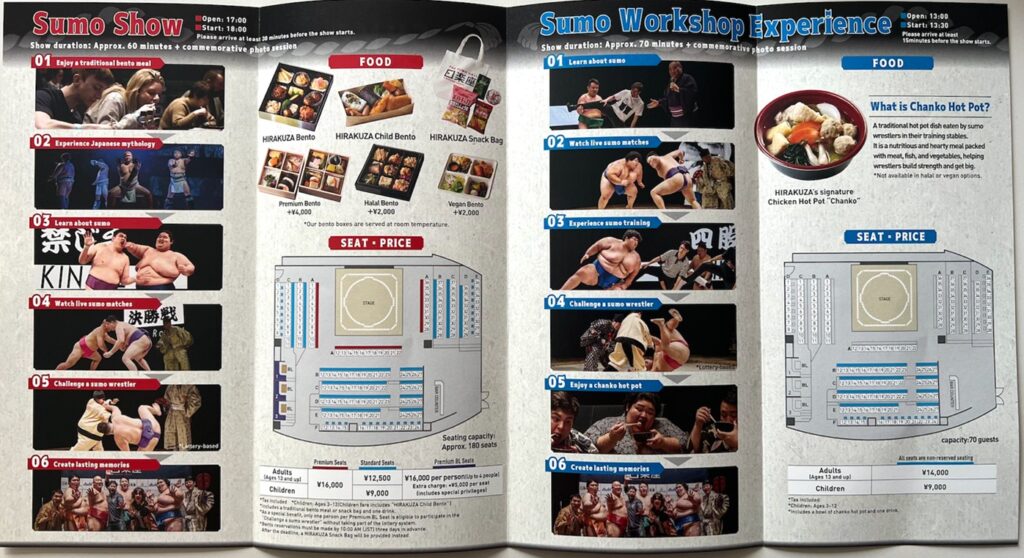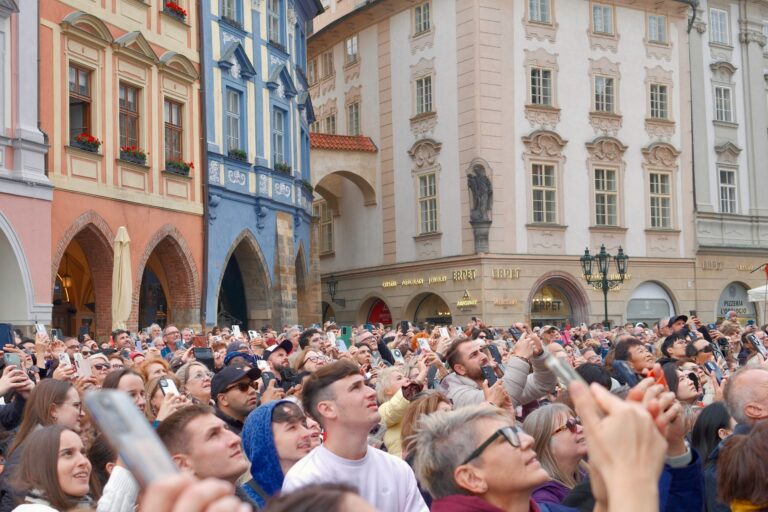Cultural Fighting as a Passion Tourism Micro-Niche: Unlocking High-Yield Traveler Engagement
The economics of martial arts tourism present a compelling case for destination managers to prioritize this micro-niche for both economic returns and soft power development. When most people think of martial arts, they imagine fitness routines or competitive fights. But this isn’t about learning to kick or punch. It’s about why these arts exist, their history, rituals, and spiritual dimensions.
My recent travels have taken me to destinations where a specific micro-niche is quietly building momentum: cultural fighting. This isn’t about fitness tourism or professional fighting circuits; it’s about travelers who seek to understand a country’s soul through its martial arts. During my recent trip to Japan, I spent time in Osaka’s Namba district to experience The Sumo Hall Hirakuza. This is about more than entertainment, it underpins how cultural fighting traditions can attract passionate travelers willing to invest time and money for an authentic experience.

The Sumo brochure I picked up, a testament to the comprehensive experience offered, goes beyond watching a contest. It provides a full immersion: a “Sumo Show” includes a traditional meal, an exploration of Japanese mythology, and even the chance to “challenge a sumo wrestler.” It targets people who want to live sumo, stay in heya (training stables), eat chanko-nabe, and understanding its Shinto roots. These travelers don’t come to fight; they come to feel. They pay for access, authenticity, and storytelling, the core of high-yield tourism.

Defining the Micro-Niche: Cultural Fighting
Cultural fighting encompasses martial arts practices that are embedded in a country’s heritage and identity. They are not simply combat techniques; they are traditions passed down through generations, tied to rituals, philosophies, and communities. The motivations for travelers in this micro-niche differ from those who travel for training camps, fitness, or competitive fighting.
Martial arts tourism comprises three distinct segments with vastly different yield profiles:
Segment 1: Fitness Tourists – Travelers incorporating martial arts into exercise routines. Average stay: 3-5 days. Daily spend: $80-120. Cultural engagement: minimal.
Segment 2: Combat Sports Enthusiasts – Athletes seeking technical improvement. Average stay: 7-14 days. Daily spend: $150-200. Cultural engagement: moderate.
Segment 3: Cultural Passion Tourists – Travelers pursuing cultural understanding through martial arts practice. Average stay: 14-30 days. Daily spend: $250-400. Cultural engagement: intensive. These travelers are willing to pay a premium for access, exclusivity, and authenticity.
Key Differentiation: Cultural Seekers vs. Fitness Tourists:
The high-yield traveler pays for:
- Exclusivity: Private sessions with masters (e.g., a taekwondo grandmaster in Seoul).
- Rituals: Muay Thai’s sacred armbands (Mongkon), sumo’s salt-throwing ceremonies.
- Storytelling: How Brazilian jiu-jitsu reflects Afro-Brazilian resilience.
Fitness tourists join group classes. Passion travelers book private guides, stay longer, and return often for festivals or belt ceremonies.
Passionate cultural fighting travelers seek:
- Immersion in the history and philosophy behind the practice
- Rituals, ceremonies, and etiquette unique to the martial art
- Opportunities to meet masters, watch performances, and witness training
- Authentic local venues, from temples to traditional gyms (dojos, camps, stables)
- Story-rich souvenirs, photography, and culinary pairings that extend the experience.
Global Examples of Cultural Martial Arts
Having visited martial arts sites across multiple countries, I’ve seen how these traditions serve as magnets for high-yield, passion-driven tourism:
Japan – Sumo Wrestling & Karate/Judo
In Osaka, The Sumo Hall Hirakuza blends live contests, training demonstrations, and cultural storytelling. It’s a curated experience, not just a sports event, appealing to travelers seeking to understand the discipline and symbolism behind sumo. Similarly, karate in Okinawa attracts enthusiasts who want to connect with the birthplace of the art. The traveler is drawn to its history and a stoic discipline that underpins Japanese culture.
Thailand – Muay Thai
Muay Thai is more than a combat sport; it’s a national symbol, it’s a performance of heritage, tied to music, ritual dances (Wai Khru), and deep community roots. Its cultural significance has been recognized by the government as part of its “5 Fs” soft power strategy – Food, Film, Fashion, Festivals, and Fighting. Muay Thai has become a core element of soft power, projecting Thai culture globally.The passionate traveler for Muay Thai is not necessarily seeking to become a fighter but to understand the discipline, the spiritual rituals, and the cultural context that surrounds it.
Korea – Taekwondo
At the Kukkiwon World Taekwondo Headquarters in Seoul, I observed how structured demonstrations combine athleticism with traditional drum music, bowing rituals, and symbolic breaking techniques. It is a symbol of national pride and resilience. These presentations engage cultural travelers who seek to understand the tenets of courtesy, integrity, perseverance, self-control, and indomitable spirit that define Korean society.
Brazil – Brazilian Jiu-Jitsu
BJJ exemplifies Brazilian innovation, turning a Japanese art form into a new discipline. In Rio de Janeiro and São Paulo, Jiu-Jitsu academies welcome visitors to learn about the art’s evolution from Japanese roots to a distinct Brazilian form, often pairing classes with cultural immersion activities.
China – Shaolin Kung Fu
With a legacy that extends back to the Shaolin monks, Kung-Fu is steeped in history and philosophy. The traveler enjoyes deep historical and spiritual connectivity. My visit to the Shaolin Temple in Henan was a reminder that for many travelers, the journey is as much about Buddhist philosophy and monastic life as it is about martial skill.
The Data Behind the Passion
A 2023 Skift report noted that “niche cultural experiences” yield 20-30% higher spend than generic tours. My own fieldwork supports this:
- In Kyoto, a $500/day sumo homestay sells out a year in advance.
- Chiang Mai’s Muay Thai “heritage camps” charge triple the standard rates for rituals like Wai Khru.
- The Shaolin Temple’s 7-day retreats start at $2,000 – with no belts or trophies awarded.
Cultural Purpose vs. Sport/Fitness Purpose
It is important to separate the “cultural purpose” traveler from the “fitness purpose” traveler.
- The cultural traveler attends a sumo tournament, visits a Muay Thai camp to watch a Wai Khru, or travels to Okinawa to meet karate masters. They pay for curated, story-driven, often one-time experiences.
- The fitness traveler attends a multi-week training camp, often on a budget, focusing on skill improvement rather than cultural immersion.
While both contribute to tourism, the cultural traveler’s spending patterns, time allocation, and broader interest in related experiences (museums, cuisine, heritage sites) create greater per-visitor yield.
Martial Arts as Soft Power
Thailand’s strategic use of Muay Thai within their “5Fs” framework (Food, Film, Fashion, Festival, Fighting) demonstrates martial arts’ soft power potential. Thailand uses Muay Thai to attract tourists and to influence perceptions abroad, integrating it into tourism promotion, diaspora communities, and cultural diplomacy.
According to the Tourism Authority of Thailand’s published reports:
- Muay Thai-related tourism contributes significantly to sports tourism revenue
- International Muay Thai practitioners number in the millions globally
- Thai cultural centers worldwide use Muay Thai as an engagement tool
The soft power impact, while difficult to quantify precisely, is acknowledged by Thai government officials as exceeding traditional tourism marketing returns based on cultural diplomacy assessments.
Similar patterns emerge globally. The Japan Foundation reports martial arts as a primary driver of Japanese language learning. The Korea Foundation cites Taekwondo as a key element of cultural diplomacy. Brazil’s Ministry of Culture recognizes Capoeira as an important cultural export.
Cultural fighting forms are valuable tools of soft power. They act as living cultural exports, fostering international recognition and emotional connection to a nation.
Consider the following cultural combat arts and their respective signature experiences:
| Martial Art | Country | Signature Experience |
|---|---|---|
| Sumo | Japan | Ritual-laden tournaments, sumo training workshops, cultural dining experiences |
| Muay Thai | Thailand | Stadium fights, ancient Wai Khru rituals, personalized Muay Thai camps |
| Taekwondo | South Korea | Seoul’s Kukkiwon headquarters draws pilgrims eager for Dan-grade certifications: Dojang immersion, temple stays, philosophy and discipline workshops |
| Kung-Fu | China (Shaolin) | Shaolin Temple’s monk-led programs focus on Chan Buddhism as much as physical skill: Shaolin monastery training and demonstration, philosophy, and Zen meditation |
| Brazilian Jiu-Jitsu | Brazil | Rio’s academies teach the Gracie family’s legacy, tying techniques to Brazilian identity: Training with masters, tournaments, urban gym culture with deep-rooted history |
| Karate/Judo | Japan | Okinawa’s dojos offer lineage-based training, emphasizing Bushido principles: Tradionational dojo training, Kata demonstrations, and heritage tours |
Lessons from the Sumo Hall Hirakuza Experience
What stood out in Osaka was the integrated approach:
- Storytelling – Explaining history, etiquette, and significance.
- Immersion – Live matches, audience participation, and photo sessions.
- Cultural Pairing – Bento meals tied to the event.
- Accessibility – Staged in an urban, visitor-friendly location without losing authenticity.
This model can be adapted for other martial arts globally – creating controlled, high-quality experiences that generate yield without over-commercializing the tradition.
Risk Factors and Mitigation
Three primary risks identified through operator interviews and field observation:
- Commodification:Converting cultural practice into tourist performance destroys authenticity and value. Mitigation: Maintain practitioner-led programs focused on genuine skill transmission.
- Over-commercialization:Rapid scaling dilutes quality and experience. Mitigation: Implement capacity constraints that create scarcity value.
- Cultural appropriation concerns:Superficial engagement can offend practitioners and communities. Mitigation: Ensure programs include deep cultural context and respect protocols.
Opportunities for Destinations
Cultural martial arts, therefore, serve as a potent tool for soft power. A nation can project its values, history, and traditions through the discipline and artistry of its fighting forms. The high-yield traveler who engages with this micro-niche leaves not just with a souvenir but with a deeper understanding of the destination’s identity. This translates into sustained interest, repeat visits, and word-of-mouth recommendations to a similar, highly specific audience.
- Leverage Legends:Thailand’s use of Muay Thai’s ancient Nai Khanom Tom myth fuels premium storytelling.
- Curate Access:Like Japan’s sumo stables, limit participation to maintain allure.
- Bundle Deeply:Pair training with tea ceremonies (Japan), temple stays (Korea), or samba nights (Brazil).
For destinations looking to move beyond mass tourism, these cultural fighting experiences present a clear and actionable path. By curating experiences that blend history, performance, and interaction, as seen in the sumo brochure, destinations can effectively attract a dedicated group of passionate travelers, ensuring a higher yield and a more meaningful form of tourism.
Destinations can develop passion tourism strategies around martial arts by:
- Partnering with cultural institutions, masters, and venues to create premium experiences
- Offering multi-sensory events that combine performance, cuisine, and heritage interpretation
- Positioning martial arts within broader cultural itineraries to extend visitor stays
- Leveraging martial arts in international branding and soft power campaigns
Final Insight
During a trip to Busan a few years ago, a taekwondo master told me: “You don’t earn a black belt. You earn the right to understand it.” That’s the mindset of the high-yield martial arts traveler—and the untapped revenue for destinations smart enough to cater to it.
Conclusion
Destinations continuing to pursue mass market tourism while ignoring passionate micro-niches like martial arts tourism are leaving significant value uncaptured. In an environment where traveler preferences increasingly favor authentic cultural experiences over passive consumption, martial arts tourism offers exactly what high-yield visitors seek: transformation through cultural immersion.
Cultural fighting, when presented authentically, is a textbook example of passion tourism. The market is global, the yield is high, and the soft power benefits are significant. From the sumo rings of Osaka to the Muay Thai rings of Bangkok, these traditions are more than sports. They are living cultural assets that, if managed thoughtfully, can deliver lasting value to destinations and communities.
References
- Nye, J. S. (2004). Soft Power: The Means to Success in World Politics. PublicAffairs.
- World Tourism Organization (UNWTO). (2023). Tourism and Cultural Heritage. Madrid: UNWTO.
- Thailand Ministry of Tourism and Sports. (2024). Tourism Positioning Strategy: The 5Fs Framework. Bangkok: MOTS.
- Japan Sumo Association. (2023). Sumo: History and Cultural Significance. Tokyo: JSA.
- Skift Research (2023). The Rise of Niche Tourism
Listen to our podcast Episode 20 on "Where Martial Arts Meets Cultural Heritage & Participative Tourism"
Photos from Sumo Hall Hirakuza Osaka and global field research in Japan, Thailand, South Korea, China, and Brazil by Dr. Jens Thraenhart.
Other images:
Bob Fisher on Unsplash, Sam Moghadam on Unsplash, Antonio Araujo on Unsplash, Camila Sanabria on Unsplash, Andreas Haubold on Unsplash, John Lamonica on Wikimedia
more insights

The AI Divide in Tourism: How Big Data Is Leaving Small Operators Behind
The AI Divide in Tourism: How Big Data Is Leaving Small Operators Behind Artificial intelligence (AI) and big data are transforming the tourism industry. From

Introducing The Strength-based Strategy Framework To Drive High-Yield Tourism
Introducing The Strength-based Strategy Framework To Drive High-Yield Tourism How an Adapted Business Model Is Revolutionizing Destination Planning: From Volume to Value soar /sɔː/verb: achieving

Beyond Boom and Bust: Rethinking Tourism Policy for Sustainable Growth
Beyond Boom and Bust: Rethinking Tourism Policy for Sustainable Growth Tourism is often hailed as a key driver of economic growth, cultural exchange, and local
High-Yield Tourism
68 Circular Road #02-01
Singapore 049422
Email: hello@highyieldtourism.com
Sign-up to receive updates about High-Yield Tourism, industry news, and reports.
